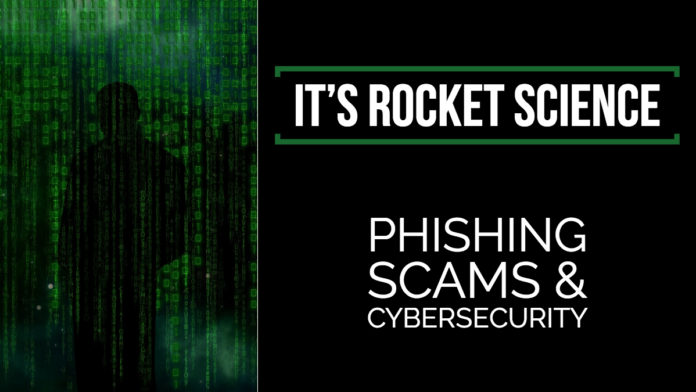Waist-deep in student loans and perpetually short on time, college students are constantly searching for ways to supplement their income and usually do so by obtaining a part-time job. Whether it’s manning the front desk of a residence hall or flipping burgers for dining services, working a minimum wage gig a few hours a week gives your bank account that extra cushion.
However, maintaining academic excellence while working part-time can be challenging, leading some students to explore less time-demanding alternatives despite the associated given the minimal work required. Faced with financially crippling circumstances and a lack of cyber awareness, students have made the mistake of revealing personal information in response to a scam email, granting information swindlers access to your most private data. This sort of internet trickery is a prime example of the malicious, fraudulent activity that has been coined a “phishing scam” since the late ‘90s.
We frequently hear about these scams through our university’s IT department, but what exactly is a phishing scam? And why do we care?
Phishing is a method of online identity theft where a scam artist poses as an authentic company in an attempt to spread computer viruses and deceive someone into providing personal information. These scammers, generally referred to as “phishers,” use sophisticated coding techniques to evade the grasps of email spam filters, ultimately allowing them to infiltrate highly sensitive information. Although phishers dabble in various mediums when impersonating legitimate organizations, college students often fall victim to emails that advertise a too-good-to-be-true job opportunity or request personal information on behalf of the university.
Perhaps not always the most skeptical and eager to make a quick buck, students are an ideal target for phishers. In the fashion of a true con artist, phishers rely on deception and will use advancements in computer technology to their advantage. Blindly pursuing financial prosperity, college students are more likely to overlook the telltale signs of these scams such as alterations to company logos, misleading hyperlinks that direct the reader to a spam-ridden website, and bulk recipients that were likely obtained from university public records. Some ways to easily identify a phishing email is by hovering over hyperlinks to determine the actual website or by carefully inspecting the URL. Additionally, phishers are notorious for manipulating text content through different coding platforms to simulate legitimacy. Further, phishers typically use HTML to create invisible text, which allows them to sneak through anti-spam software. Because of this, it is wise to adjust your email settings and examine any suspicious email as plain text rather than HTML.
Once a phisher acquires even a few pieces of information, they can hack into your bank accounts and push you even further into the student-debt sinkhole. While these consequences may seem temporary, recovering from identity theft is costly and, in more serious cases, disastrously unattainable. A cluttered inbox is nearly inescapable as a college student, but it is imperative to recognize that a vague email riddled with grammatical errors and an unreasonable sense of urgency is likely “phishing” for identifying information. As enticing as some of these phishing scams may be, exercise caution before clicking on or responding to an email offering cold, hard cash to work from home as a personal assistant.
If a phisher is pretending to be from the university, promptly notify the IT department by forwarding the full email to helpdesk@sru.edu. The university will never request sensitive information through email and urges you to remain cognizant of cybersecurity when communicating electronically.








